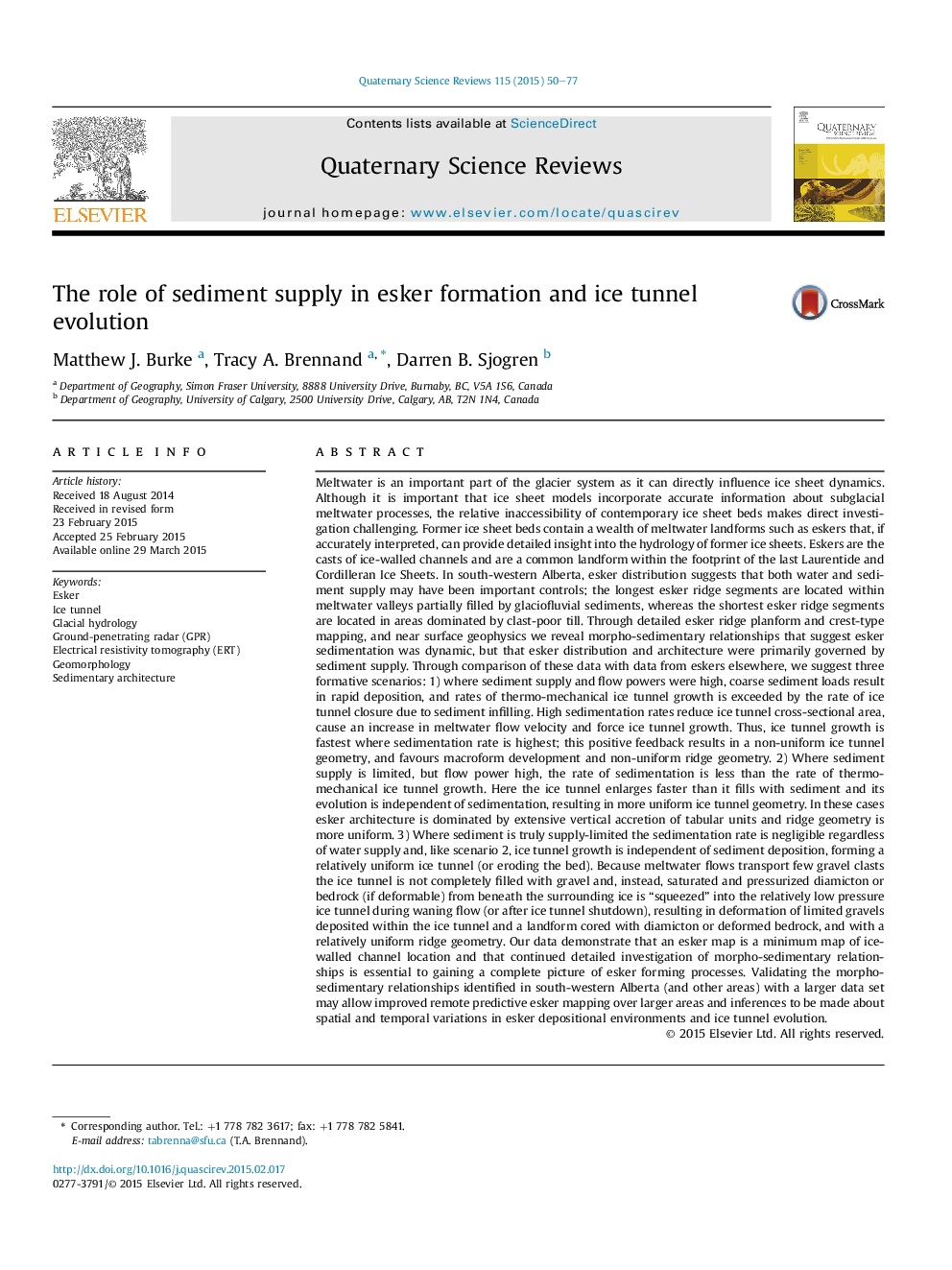| کد مقاله | کد نشریه | سال انتشار | مقاله انگلیسی | نسخه تمام متن |
|---|---|---|---|---|
| 6446213 | 1640819 | 2015 | 28 صفحه PDF | دانلود رایگان |
عنوان انگلیسی مقاله ISI
The role of sediment supply in esker formation and ice tunnel evolution
ترجمه فارسی عنوان
نقش عرضه رسوب در شکل گیری اشک و تکامل تونل یخ
دانلود مقاله + سفارش ترجمه
دانلود مقاله ISI انگلیسی
رایگان برای ایرانیان
کلمات کلیدی
موضوعات مرتبط
مهندسی و علوم پایه
علوم زمین و سیارات
زمین شناسی
چکیده انگلیسی
Meltwater is an important part of the glacier system as it can directly influence ice sheet dynamics. Although it is important that ice sheet models incorporate accurate information about subglacial meltwater processes, the relative inaccessibility of contemporary ice sheet beds makes direct investigation challenging. Former ice sheet beds contain a wealth of meltwater landforms such as eskers that, if accurately interpreted, can provide detailed insight into the hydrology of former ice sheets. Eskers are the casts of ice-walled channels and are a common landform within the footprint of the last Laurentide and Cordilleran Ice Sheets. In south-western Alberta, esker distribution suggests that both water and sediment supply may have been important controls; the longest esker ridge segments are located within meltwater valleys partially filled by glaciofluvial sediments, whereas the shortest esker ridge segments are located in areas dominated by clast-poor till. Through detailed esker ridge planform and crest-type mapping, and near surface geophysics we reveal morpho-sedimentary relationships that suggest esker sedimentation was dynamic, but that esker distribution and architecture were primarily governed by sediment supply. Through comparison of these data with data from eskers elsewhere, we suggest three formative scenarios: 1) where sediment supply and flow powers were high, coarse sediment loads result in rapid deposition, and rates of thermo-mechanical ice tunnel growth is exceeded by the rate of ice tunnel closure due to sediment infilling. High sedimentation rates reduce ice tunnel cross-sectional area, cause an increase in meltwater flow velocity and force ice tunnel growth. Thus, ice tunnel growth is fastest where sedimentation rate is highest; this positive feedback results in a non-uniform ice tunnel geometry, and favours macroform development and non-uniform ridge geometry. 2) Where sediment supply is limited, but flow power high, the rate of sedimentation is less than the rate of thermo-mechanical ice tunnel growth. Here the ice tunnel enlarges faster than it fills with sediment and its evolution is independent of sedimentation, resulting in more uniform ice tunnel geometry. In these cases esker architecture is dominated by extensive vertical accretion of tabular units and ridge geometry is more uniform. 3) Where sediment is truly supply-limited the sedimentation rate is negligible regardless of water supply and, like scenario 2, ice tunnel growth is independent of sediment deposition, forming a relatively uniform ice tunnel (or eroding the bed). Because meltwater flows transport few gravel clasts the ice tunnel is not completely filled with gravel and, instead, saturated and pressurized diamicton or bedrock (if deformable) from beneath the surrounding ice is “squeezed” into the relatively low pressure ice tunnel during waning flow (or after ice tunnel shutdown), resulting in deformation of limited gravels deposited within the ice tunnel and a landform cored with diamicton or deformed bedrock, and with a relatively uniform ridge geometry. Our data demonstrate that an esker map is a minimum map of ice-walled channel location and that continued detailed investigation of morpho-sedimentary relationships is essential to gaining a complete picture of esker forming processes. Validating the morpho-sedimentary relationships identified in south-western Alberta (and other areas) with a larger data set may allow improved remote predictive esker mapping over larger areas and inferences to be made about spatial and temporal variations in esker depositional environments and ice tunnel evolution.
ناشر
Database: Elsevier - ScienceDirect (ساینس دایرکت)
Journal: Quaternary Science Reviews - Volume 115, 1 May 2015, Pages 50-77
Journal: Quaternary Science Reviews - Volume 115, 1 May 2015, Pages 50-77
نویسندگان
Matthew J. Burke, Tracy A. Brennand, Darren B. Sjogren,
